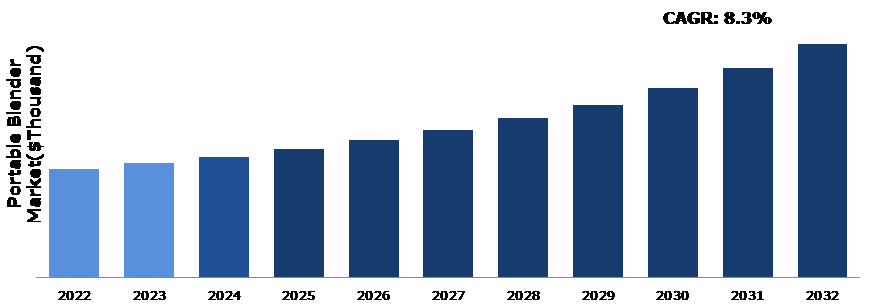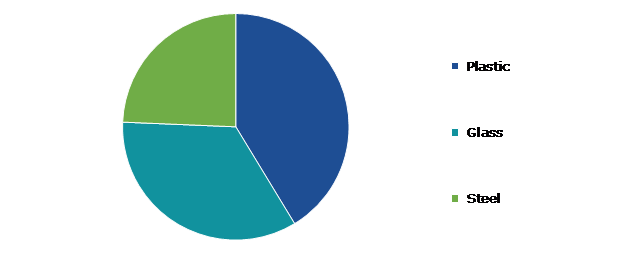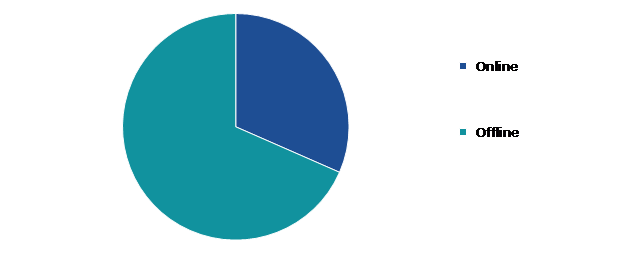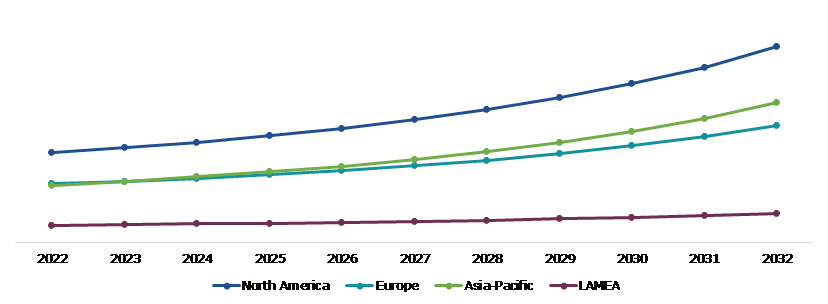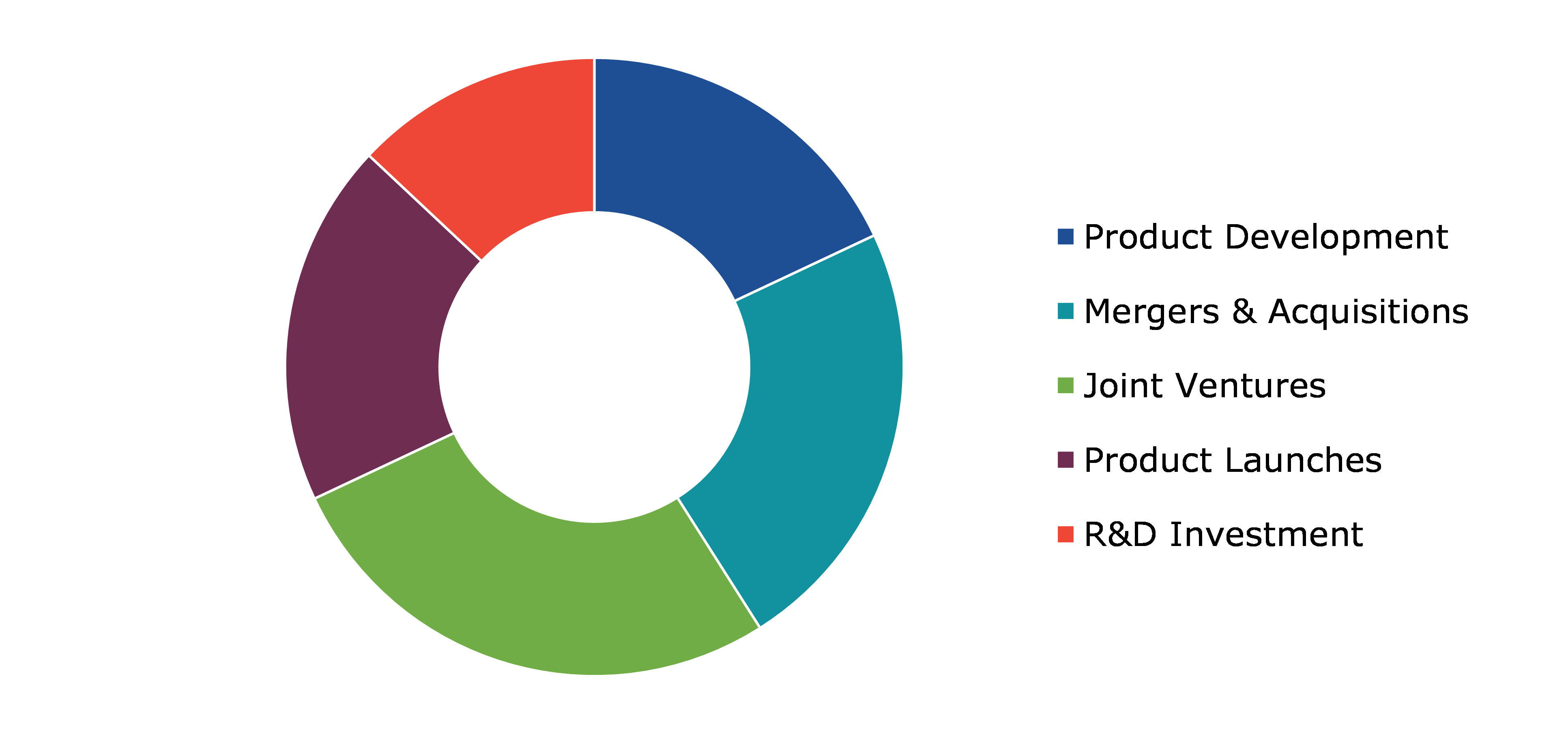Global Portable Blender Market Report
RA08748
Global Portable Blender Market by Material (Plastic, Glass, and Steel), Distribution Channel (Online and Offline), and Region (North America, Europe, Asia-Pacific, and LAMEA): Opportunity Analysis and Industry Forecast, 2023-2032
Portable Blender Overview
A portable blender is a small and lightweight kitchen appliance used for on-the-go blending and mixing of substances. Users can blend their preferred juices, smoothies, or shakes anywhere as it is battery-operated or rechargeable and does not need a conventional power source. Blenders are classified into two types: stationary and portable. Portable blenders come in a variety of types and capacities, with varied motor sizes and the added benefit of rechargeable batteries. These battery-powered portable blenders are ideal for fitness enthusiasts. Portable blenders are designed to be easy to use, making them ideal for various situations where a traditional countertop blender may not be accessible or convenient to use. They frequently have smaller sizes than standard blenders and a compact design that makes it possible to be carried into bags, backpacks, or baggage.
Portable blenders usually consist of a blending container or jar with integrated blades, a motor or power source, and control buttons or switches. The blending container is typically made from durable materials such as Bisphenol A (BPA) free plastic or glass and may have a secure lid to prevent spills during transportation.
Global Portable Blender Market Analysis
The global portable blender market size was $137,754.2 thousand in 2022 and is predicted to grow with a CAGR of 8.3%, by generating a revenue of $296,920.7 thousand by 2032.
Source: Research Dive Analysis
COVID-19 Impact on Global Portable Blender Market
The COVID-19 impact on portable blender market pandemic had a significant impact on various industries, including the portable blender market. COVID-19 has disrupted global supply chains, leading to manufacturing delays, shortages of raw materials, and logistical challenges. This disruption affected the production and availability of portable blenders, causing potential delays in manufacturing and distribution. Lockdown measures, social distancing norms, and workforce shortages have led to manufacturing delays in many countries. Factory closures or reduced capacity have affected the production of portable blenders and related components. These delays have resulted in a limited supply of portable blenders, making it challenging for manufacturers to meet the demand from consumers. Delays in transportation and increased shipping costs impacted the timely delivery of portable blenders from manufacturing facilities to distribution centers and retailers. Import and export restrictions in some regions also hampered the smooth flow of goods across borders.
With the pandemic emphasizing the importance of health and wellness, consumers have become more conscious of their dietary habits. This has led to an increase in demand for portable blenders as individuals prioritized at-home meal preparation and healthier beverage options. Moreover, the shift towards remote work and limited dining-out options has created a need for convenient and useful kitchen appliances, making portable blenders a popular choice.
Increase in Health-Conscious Population and Changing Consumer Lifestyles to Drive the Market Growth
The market for portable blender is expanding due to the rising demand for nutritious foods and beverages. The sales of portable blenders are anticipated to increase owing to factors such as rapid urbanization, changing lifestyles, evolving food consumption habits, and busy consumer schedules. The market for portable blender is also expanding due to an increase in fitness enthusiasts and healthy eating practices. Portable blender use is on the rise among consumers who are health-conscious because of the rising popularity of shakes and smoothies. Personalized nutrition focuses on customizing dietary choices to individual needs, preferences, and goals. Portable blenders play a crucial role in this trend by allowing individuals to create customized blends that meet their specific nutritional requirements. Meal replacement options have gained popularity among individuals looking for convenient and nutritionally balanced alternatives to traditional meals. Portable blenders facilitate the preparation of personalized meal replacements such as shakes or smoothies, allowing users to control the ingredients, portion sizes, and nutrient profiles according to their specific dietary needs and goals. All these factors are projected to drive the portable blender market growth during the forecast period.
To know more about global portable blender market drivers, get in touch with our analysts here.
Battery Limitations and Smaller Blending Capacity are Concerns to Restrain the Market Growth
The performance and battery life of portable blenders depends on how they are be used. Rechargeable portable blenders may often need to be recharged or replaced due to their poor battery performance. In addition, portable blenders may not have sufficient blending capacity as compared to their countertop counterparts, which may have an impact on how well they mix various items, particularly fruits and vegetables. As portable blenders are more compact than conventional countertop blenders, they also have a limited capacity for mixing. Those who require high quantities to blend food products may not prefer portable blenders as they have smaller blending containers with lower volume constraints. This restriction may make it difficult to use portable blenders in situations involving many people or when making huge quantities of food or drinks. Limited blending capacity and low battery life are the major factors projected to the hamper the portable blender market growth during the forecast period.
Rise in Sale of Portable Blenders on E-Commerce Platforms to Drive Lucrative Growth Opportunities for the Market
The expanding reach of e-commerce platforms and the increasing sale of portable blenders via online platforms have created lucrative growth opportunities for the portable blender market players share. E-commerce expansion has changed the way customers shop, offering convenience, accessibility, and a vast variety of product choices. This shift towards online shopping has significantly widened the market reach, allowing portable blender manufacturers to tap into a global customer base. Simultaneously, the market is witnessing a surge in the adoption of portable blenders due to factors such as rising health awareness, urbanization, and changing lifestyles. As people embrace healthier living and seek convenient kitchen solutions, the demand for portable blenders has increased. This presents a tremendous growth potential for manufacturers looking to expand their market presence and focus on changing consumer trends. Industry players must adapt to these trends, invest in marketing strategies, and deliver high-quality products to capitalize on the immense opportunities presented by e-commerce expansion.
To know more about global portable blender market opportunities, get in touch with our analysts here.
Global Portable Blender Market Share, by Material, 2022
Source: Research Dive Analysis
The plastic sub-segment accounted for the highest market share in 2022. Plastic-made portable blenders are ideal for consumers who enjoy traveling as they are lightweight yet highly durable. Durability is an important factor driving the demand for plastic-made portable blenders. Portable plastic blenders can be used to have a nutritious smoothie or a liquid supplement at the gym, during outdoor exercises, or at the office desk. In addition, plastic portable blenders are often more affordable compared to their counterparts made from other materials, making them accessible to a wider consumer base. This affordability factor contributes to the market demand, especially for price-conscious consumers looking for a cost-effective blending option without compromising on functionality and convenience.
Global Portable Blender Market Size, by Distribution Channel, 2022
Source: Research Dive Analysis
The offline sub-segment accounted for the highest market share in 2022. Offline distribution channels provide the buyer with a first-hand view at the products, allowing them to easily verify the product's quality and durability. This distribution channel has a first-mover advantage, allowing stores to reach out to a larger target audience. When customers visit the shop, they may interact with the in-store associates, which helps them understand the product better. Offline stores also have various offers and discounts which help to attract several customers. Local offline stores have also gained customers’ trust over years. These advantages make the offline distribution channel more preferable over the online distribution channel.
Global Portable Blender Market Size & Forecast, by Region, 2022-2032 ($Thousand)
Source: Research Dive Analysis
The North America portable blender market generated the highest revenue in 2022. In North America, there is a rising trend towards healthier diets and a greater demand for nutritional food products. People in the region want quick and easy meal preparations that are also nutritious, which is made possible by the usage of portable blenders, increasing demand for the product in the region. The popularity of blender-made smoothies, shakes, and juices is expanding the portable blender target market in North America, led by countries such as the U.S. Portable blender use has increased in the region as a result of residents' growing commitment to eating healthily and consuming nourishing foods. For instance, as of 2019, there were about 45 million adult members of gyms in the U.S. Customers in this region are looking for convenient shopping options, healthy diets, transparency in the food industry, and safe food. Due to the expanding trend, many manufacturers have begun to redefine products and appliances to meet the needs of consumers who are health-conscious by providing convenient and healthier options.
Competitive Scenario in the Global Portable Blender Market
Investment and agreement are common strategies followed by major market players. For instance, on March 23, 2023, SharkNinja Operating LLC, a worldwide product design and technology business that delivers simple living solutions, released the Ninja Blast Portable Blender. This high-performance and lightweight blender is the first cordless blender and a perfect option for high-quality beverages.
Source: Research Dive Analysis
Some of the leading portable blender market analysis players are Conair Cuisinart, Pop Babies, Oster, BILACA, Hamilton Beach, Keyton, Little bees, Blufied, NutriBullet, and BELLA
| Aspect | Particulars |
| Historical Market Estimations | 2020-2021 |
| Base Year for Market Estimation | 2022 |
| Forecast Timeline for Market Projection | 2023-2032 |
| Geographical Scope | North America, Europe, Asia-Pacific, and LAMEA |
| Segmentation by Material |
|
| Segmentation by Distribution Channel |
|
| Key Companies Profiled |
|
Q1. What is the size of the global portable blender market?
A. The global portable blender market size was over $137,754.2 thousand in 2022 and is projected to reach $296,920.7 thousand by 2032.
Q2. Which are the major companies in the portable blender market?
A. Conair Cuisinart, Pop Babies, and Oster are some of the key players in the global portable blender market.
Q3. Which region, among others, possesses greater investment opportunities in the future?
A. Asia-Pacific possesses great investment opportunities for investors in the future.
Q4. What will be the growth rate of the Asia-Pacific portable blender market?
A. Asia-Pacific portable blender market share is anticipated to grow at 9.6% CAGR during the forecast period.
Q5. What are the strategies opted by the leading players in this market?
A. Agreement and investment are the two key strategies opted by the operating companies in this market.
Q6. Which companies are investing more on R&D practices?
A. Conair Cuisinart, Pop Babies, and Oster are the companies investing more on R&D activities for developing new products and technologies.
1.Research Methodology
1.1.Desk Research
1.2.Real time insights and validation
1.3.Forecast model
1.4.Assumptions and forecast parameters
1.5.Market size estimation
1.5.1.Top-down approach
1.5.2.Bottom-up approach
2.Report Scope
2.1.Market definition
2.2.Key objectives of the study
2.3.Report overview
2.4.Market segmentation
2.5.Overview of the impact of COVID-19 on Global portable blender market
3.Executive Summary
4.Market Overview
4.1.Introduction
4.2.Growth impact forces
4.2.1.Drivers
4.2.2.Restraints
4.2.3.Opportunities
4.3.Market value chain analysis
4.3.1.List of raw material suppliers
4.3.2.List of manufacturers
4.3.3.List of distributors
4.4.Innovation & sustainability matrices
4.4.1.Technology matrix
4.4.2.Regulatory matrix
4.5.Porter’s five forces analysis
4.5.1.Bargaining power of suppliers
4.5.2.Bargaining power of consumers
4.5.3.Threat of substitutes
4.5.4.Threat of new entrants
4.5.5.Competitive rivalry intensity
4.6.PESTLE analysis
4.6.1.Political
4.6.2.Economical
4.6.3.Social
4.6.4.Technological
4.6.5.Environmental
4.7.Impact of COVID-19 on portable blender market
4.7.1.Pre-covid market scenario
4.7.2.Post-covid market scenario
5.Portable Blender Market Analysis, by Material
5.1.Overview
5.2.Plastic
5.2.1.Definition, key trends, growth factors, and opportunities
5.2.2.Market size analysis, by region, 2022-2032
5.2.3.Market share analysis, by country, 2022-2032
5.3.Glass
5.3.1.Definition, key trends, growth factors, and opportunities
5.3.2.Market size analysis, by region, 2022-2032
5.3.3.Market share analysis, by country, 2022-2032
5.4.Steel
5.4.1.Definition, key trends, growth factors, and opportunities
5.4.2.Market size analysis, by region, 2022-2032
5.4.3.Market share analysis, by country, 2022-2032
5.5.Research Dive Exclusive Insights
5.5.1.Market attractiveness
5.5.2.Competition heatmap
6.Portable Blender Market Analysis, by Distribution Channel
6.1.Online
6.1.1.Definition, key trends, growth factors, and opportunities
6.1.2.Market size analysis, by region, 2022-2032
6.1.3.Market share analysis, by country, 2022-2032
6.2.Offline
6.2.1.Definition, key trends, growth factors, and opportunities
6.2.2.Market size analysis, by region, 2022-2032
6.2.3.Market share analysis, by country, 2022-2032
6.3.Research Dive Exclusive Insights
6.3.1.Market attractiveness
6.3.2.Competition heatmap
7.Portable Blender Market, by Region
7.1.North America
7.1.1.U.S.
7.1.1.1.Market size analysis, by Material, 2022-2032
7.1.1.2.Market size analysis, by Distribution Channel, 2022-2032
7.1.2.Canada
7.1.2.1.Market size analysis, by Material, 2022-2032
7.1.2.2.Market size analysis, by Distribution Channel, 2022-2032
7.1.3.Mexico
7.1.3.1.Market size analysis, by Material, 2022-2032
7.1.3.2.Market size analysis, by Distribution Channel, 2022-2032
7.1.4.Research Dive Exclusive Insights
7.1.4.1.Market attractiveness
7.1.4.2.Competition heatmap
7.2.Europe
7.2.1.Germany
7.2.1.1.Market size analysis, by Material, 2022-2032
7.2.1.2.Market size analysis, by Distribution Channel, 2022-2032
7.2.2.UK
7.2.2.1.Market size analysis, by Material, 2022-2032
7.2.2.2.Market size analysis, by Distribution Channel, 2022-2032
7.2.3.France
7.2.3.1.Market size analysis, by Material, 2022-2032
7.2.3.2.Market size analysis, by Distribution Channel, 2022-2032
7.2.4.Spain
7.2.4.1.Market size analysis, by Material, 2022-2032
7.2.4.2.Market size analysis, by Distribution Channel, 2022-2032
7.2.5.Italy
7.2.5.1.Market size analysis, by Material, 2022-2032
7.2.5.2.Market size analysis, by Distribution Channel, 2022-2032
7.2.6.Rest of Europe
7.2.6.1.Market size analysis, by Material, 2022-2032
7.2.6.2.Market size analysis, by Distribution Channel, 2022-2032
7.2.7.Research Dive Exclusive Insights
7.2.7.1.Market attractiveness
7.2.7.2.Competition heatmap
7.3.Asia-Pacific
7.3.1.China
7.3.1.1.Market size analysis, by Material, 2022-2032
7.3.1.2.Market size analysis, by Distribution Channel, 2022-2032
7.3.2.Japan
7.3.2.1.Market size analysis, by Material, 2022-2032
7.3.2.2.Market size analysis, by Distribution Channel, 2022-2032
7.3.3.India
7.3.3.1.Market size analysis, by Material, 2022-2032
7.3.3.2.Market size analysis, by Distribution Channel, 2022-2032
7.3.4.Australia
7.3.4.1.Market size analysis, by Material, 2022-2032
7.3.4.2.Market size analysis, by Distribution Channel, 2022-2032
7.3.5.South Korea
7.3.5.1.Market size analysis, by Material, 2022-2032
7.3.5.2.Market size analysis, by Distribution Channel, 2022-2032
7.3.6.Rest of Asia-Pacific
7.3.6.1.Market size analysis, by Material, 2022-2032
7.3.6.2.Market size analysis, by Distribution Channel, 2022-2032
7.3.7.Research Dive Exclusive Insights
7.3.7.1.Market attractiveness
7.3.7.2.Competition heatmap
7.4.LAMEA
7.4.1.Brazil
7.4.1.1.Market size analysis, by Material, 2022-2032
7.4.1.2.Market size analysis, by Distribution Channel, 2022-2032
7.4.2.Saudi Arabia
7.4.2.1.Market size analysis, by Material, 2022-2032
7.4.2.2.Market size analysis, by Distribution Channel, 2022-2032
7.4.3.UAE
7.4.3.1.Market size analysis, by Material, 2022-2032
7.4.3.2.Market size analysis, by Distribution Channel, 2022-2032
7.4.4.South Africa
7.4.4.1.Market size analysis, by Material, 2022-2032
7.4.4.2.Market size analysis, by Distribution Channel, 2022-2032
7.4.5.Rest of LAMEA
7.4.5.1.Market size analysis, by Material, 2022-2032
7.4.5.2.Market size analysis, by Distribution Channel, 2022-2032
7.4.6.Research Dive Exclusive Insights
7.4.6.1.Market attractiveness
7.4.6.2.Competition heatmap
8.Competitive Landscape
8.1.Top winning strategies, 2022
8.1.1.By strategy
8.1.2.By year
8.2.Strategic overview
8.3.Market share analysis, 2022
9.Company Profiles
9.1.Conair Cuisinart
9.1.1.Overview
9.1.2.Business segments
9.1.3.Product portfolio
9.1.4.Financial performance
9.1.5.Recent developments
9.1.6.SWOT analysis
9.2.Pop Babies
9.2.1.Overview
9.2.2.Business segments
9.2.3.Product portfolio
9.2.4.Financial performance
9.2.5.Recent developments
9.2.6.SWOT analysis
9.3.Oster
9.3.1.Overview
9.3.2.Business segments
9.3.3.Product portfolio
9.3.4.Financial performance
9.3.5.Recent developments
9.3.6.SWOT analysis
9.4.BILACA
9.4.1.Overview
9.4.2.Business segments
9.4.3.Product portfolio
9.4.4.Financial performance
9.4.5.Recent developments
9.4.6.SWOT analysis
9.5.Hamilton Beach
9.5.1.Overview
9.5.2.Business segments
9.5.3.Product portfolio
9.5.4.Financial performance
9.5.5.Recent developments
9.5.6.SWOT analysis
9.6.Keyton
9.6.1.Overview
9.6.2.Business segments
9.6.3.Product portfolio
9.6.4.Financial performance
9.6.5.Recent developments
9.6.6.SWOT analysis
9.7.Little bees
9.7.1.Overview
9.7.2.Business segments
9.7.3.Product portfolio
9.7.4.Financial performance
9.7.5.Recent developments
9.7.6.SWOT analysis
9.8.Blufied
9.8.1.Overview
9.8.2.Business segments
9.8.3.Product portfolio
9.8.4.Financial performance
9.8.5.Recent developments
9.8.6.SWOT analysis
9.9.NutriBullet
9.9.1.Overview
9.9.2.Business segments
9.9.3.Product portfolio
9.9.4.Financial performance
9.9.5.Recent developments
9.9.6.SWOT analysis
9.10.BELLA
9.10.1.Overview
9.10.2.Business segments
9.10.3.Product portfolio
9.10.4.Financial performance
9.10.5.Recent developments
9.10.6.SWOT analysis
Personalize this research
- Triangulate with your own data
- Request your format and definition
- Get a deeper dive on a specific application, geography, customer or competitor
- + 1-888-961-4454 Toll - Free
- support@researchdive.com

